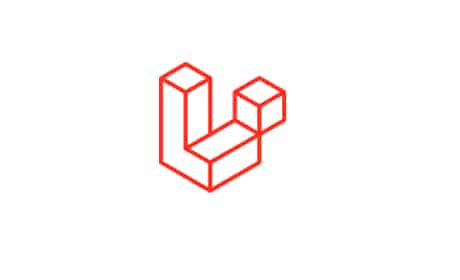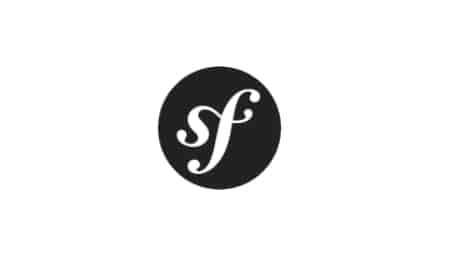Laravel vs Symfony – Two of the Best PHP Frameworks Compared
When it comes to building enterprise-grade web applications, PHP developers often prefer to use a development framework. Using a framework in application development makes it much easier for you to handle things with minimal coding. PHP-based frameworks also have coding standards that recommend the best coding style, practices, and methodologies. Since a framework is a solid foundation for your project, you need to choose a framework wisely. When it comes to choosing the right framework for your project, you may be overwhelmed to find a wide range of options available in the PHP framework marketplace, including Laravel, Symfony, Zend Framework, CakePHP, CodeIgniter, Slim Framework, Phalcon, Yii, Silex, Kohana, li3, PHPixie, Nette, FuelPHP, Fat Free Framework, PRADO, PureMVC, Aura, Nova Framework (formerly Simple MVC Framework) and Flight. Here, we will compare the two best PHP frameworks – Laravel vs Symfony. We will dig deeper into each framework to see what both frameworks bring to the table and ultimately help you choose the one that best fits your project.

Laravel vs Symfony – A Quick Overview
Laravel
Created by Taylor Otwell, the Laravel PHP framework was first rolled out in June 2011 as a better alternative to CodeIgniter. Later the framework developed into a fully qualified MVC framework. Over a decade, the PHP framework evolved with out-of-the-box core features such as Eloquent ORM, Artisan, Blade, LTS, Scheduler, Bundles, Dusk, dependency manager Composer, and more.
The latest stable Laravel version 8.3.0 which was released on September 15, 2020, comes with new features like Tailwind CSS for pagination views, Laravel Jetstream, model factory classes, migration squashing, and other usability enhancements. Laravel’s advanced features and a flourishing ecosystem are what make Lararvel the best PHP framework for enterprises, especially for web artisans. The Laravel PHP framework is open-source software licensed under the MIT license.
Being a PHP-based, MVC framework, Laravel attempts to facilitate faster development and reduce complexities by easing common tasks used in most web projects, such as authentication, routing, sessions, and caching. Laravel aims at making the software development process a pleasing experience for the developers without compromising the application’s functionality. If you’re well-versed with Core PHP and Advanced PHP, Laravel will be much easier for you.
The name Laravel is the trademark of Taylor Otwell. The official forum for Laravel is the Laracasts Discuss site having more than 65K threads and there is also the Laravel.io Forum with more than 15K threads.
If you’re ready to get started with Laravel development services, we, at Orange Mantra, are here to help you out with our affordable Laravel development services.
Symfony
Symfony was launched in October 2005. Its first stable version was released in January 2007 followed by version 2 released in July 2011. This version was a rewrite of the entire framework from the ground up. The latest version is 5.1.3 which was released on July 24, 2020.
The Symfony PHP framework is officially sponsored by SensioLabs, a French software developer and service provider. The name Symfony is a trademark of its original author Fabien Potencier. Symfony software is released under the MIT license.
Symfony is a set of reusable PHP components, a PHP Web Application framework, a Philosophy, and a Community that work together in harmony to develop web projects. However, it is not a true MVC framework like Laravel.
The Symfony community is an active group of more than 300,000 developers from over 120 countries. Their original forum is now read-only and the current forum is one StackOverflow having more than 50,000 Symfony-based questions.
Symfony’s components are also used in other well-established, active projects including Magento, Drupal, Joomla!, PrestaShop, and obviously Laravel. Over the years, Symfony has developed into a more reliable and rich framework, mainly used for large complex enterprise projects.
Symfony versus Laravel – Pros and Cons
Laravel
| Pros | Cons |
|---|---|
| The framework is always up-to-date with the newest version of PHP features. | Some Laravel-based web applications might be too heavy to load faster on mobile. |
| Laravel allows app integration and email services through API. | Newer versions of Laravel are not compatible, you could break the code after updating. |
| It is compatible with other third-party platforms and libraries. | |
| It has a large ecosystem of additional tools. |
Symfony
| Pros | Cons |
|---|---|
| Symfony is popular among a large number of developers. It also has the biggest community in the market. | In the beginning, you may find it harder to learn it than any other PHP framework. |
| Popular platforms like Drupal, Magento, and eZ Publish use Symfony. | It depends on other technologies and that’s why some web applications might load slower. Laravel lacks origin elements |
| Symfony stays updated to meet the web developers’ changing needs. | Because of the lack of prebuilt code for multiple uses, Laravel requires more time for testing due to which the development process is slower. |
Want to Discuss Your Web Application Project with Us?
Laravel vs Symfony – Server Requirements
Laravel
| Laravel | Symfony |
|---|---|
| PHP >= 5.6.4 | PHP >= 5.5.9 |
| PDO PHP Extension | ctype Extension |
| XML PHP Extension | Your php.ini should have the date.timezone setting |
| It has a large ecosystem of additional tools. | |
| Mbstring PHP Extension | |
| Composer | |
| Tokenizer PHP Extension |
Laravel vs Symfony – Installation
Laravel
The easiest way to install Laravel is via Composer, by first downloading Laravel.
composer global require "laravel/installer
and then by installing a new Laravel using this Composer command:
composer create-project --prefer-dist laravel/laravel blog
Symfony
There are several ways to install Symfony. Some are global and some are intended for development purposes. We will show here the simplest way, which is also an installation via Composer:
composer create-project symfony/framework-standard-edition symfony
You need to then answer a few questions, which finally creates a new install of Symfony in a directory called symfony.
For both Symfony and Laravel, the term ‘install’ means a set of directories that are not meant to be public. Once the system is installed, you need to set your webroot to be symfony/web/ for our Symfony example and blog/public for our Laravel example.
If you have less technical knowledge and need help with the installation of Symfony or Laravel, you may take advantage of our dedicated Symfony development services or Laravel development services.
Symfony vs Laravel – Template Engine
Laravel
Laravel uses Blade that is a simple, yet powerful templating engine. Unlike any other PHP templating engine, Blade does not confine you from using plain PHP code in your views. All Blade views are compiled into plain PHP code and cached until they are modified. This means the Blade templating engine adds essentially zero overhead to your application.


Symfony
Symfony uses Twig, developed by Fabien Potencier himself. With Twig, you can write concise, readable templates that are more web designer-friendly and more powerful than PHP templates in many ways.
Here also, you are not stuck. Twig can be used in Laravel via the TwigBridge project that allows you to use Twig seamlessly in Laravel 5.
So, when it comes to Laravel vs Symfony, the choice of Twig vs Blade for many developers comes down to two points. One, you can use regular old PHP code in Blade. Some developers love that as it is easy while others claim that it encourages developers to mix business logic with the presentation. Twig, on the other hand, resolves all these issues. Twig also resolves the issue of portability as it is used in other projects as well which is its major advantage. And, this is why companies prefer using Symfony development services over Laravel development services.
Laravel versus Symfony – Internationalization
Both Laravel and Symfony support internationalization or translations. While Laravel offers localization features, Symfony has a translator configuration option.
However, the main difference between Symfony vs Laravel is that Laravel uses PHP and JSON files to store localization data whereas Symfony supports a variety of translation formats including PHP, Qt, .po, .mo, JSON, CSV, INI, etc.. It also supports more standardized formats such as XLIFF and gettex

Laravel vs Symfony – Routing
While the routing system of Laravel works in simple PHP, the Symfony Routing system allows you to define routing in annotation format or XML, YAML, or PHP. This is another main difference between Laravel vs Symfony as both projects have their own set of advanced features that cover most use cases.
Symfony vs Laravel – Performance and Scalability
While Laravel comes with a set of unified APIs for caching views, Symfony caches views and source code by default. This is why Symfony has a longer website loading time.
The average loading time for Laravel-based websites is about 60 milliseconds whereas Symfony websites load in 250 milliseconds.
The Laravel PHP framework is based upon Symfony Components. Also, Laravel allows you to do PHP programming with minimal coding and higher performance. If you’re planning to build a web application for business purposes, then you should consider reaching out to one of the best Laravel development companies as the framework works best for projects that need faster delivery with fewer resources.
Conversely, Symfony needs more time, coding effort, and financial resources in the initial stage of your projects. The framework also requires a lot of work for configuring its elements. However, Symfony is ideal for a complex web project because its custom functionality works well with your project requirements. If you have a complex web application project, we recommend going with Symfony development services.
Laravel vs Symfony – Database Support System
Both Symfony and Laravel use Object Related Mapping (ORM) for data access. While Laravel ORM uses Eloquent, Symfony ORM uses Doctrine for data handling. Symfony database migrations are automatic, however, developers need to define specific fields within the given code. With Laravel database migrations, there’s no need to define the fields.
With ORM-supported databases, both Laravel and Symfony make it easier to process and manipulate data.
Symfony offers a few more options for database support including:
- MySQL
- Oracle
- Drizzle
- SQLServer
- PostgreSQL
- SQLite
- SAP Sybase SQL Anywhere
Laravel, on the other hand, supports only a few of them:
- MySQL
- PostgreSQL
- SQLite
- SQLServer
Considering these options, we see that Symfony supports more databases than Laravel which makes data manipulation and management much simpler. So, Symfony is the clear winner in this round.
However, Laravel’s functionality helps you to avoid huge and large code blocks. This also saves a lot of time and effort on the web application project. Laravel offers many tools that make common tasks easier and automates functions like authentication, sessions, queuing, caching, and routing.
Symfony vs Laravel – Popularity, Learning Curve, and Documentation
You can find various useful tutorials and resources online for Laravel in the Laravel documentation, Laracasts discussion forum, Codebright, Treehouse, and Sitepoint. The Laravel Github docs are also very extensive and offer excellent information, unlike Symfony. You can also find Symfony documentation that covers more topics on bundles, service containers, components, and other sets of features.
Symfony is also supported by a large community of over 600,000 developers and contributors from more than 120 countries that helps resolve issues, fix bugs, and identify coding errors. This PHP-based framework is also popular amongst web developers. Symfony provides comprehensive documentation even though the resources are not as extensive as those for Laravel.
So, overall, Laravel is more popular than Symfony. There are over 1 million websites built on the Laravel framework. However, the number of websites built on the Symfony framework is around 33,000 only.
Symfony or Laravel – Which PHP Framework is Ideal for Your Web Application Project?
Considering all the above-mentioned points, it’s clear that both Laravel and Symfony offer a rich feature set. Both frameworks are ideal for a wide range of web development projects.
If you’re looking for rapid development, performance, and speed, then you should reach out to one of the professional Laravel development companies. If you’re planning to build complex, large-scale web applications, then you should go with Symfony development services.
You must choose a framework that fits your web project well. Just make sure you choose the right framework that is suitable for your web apps.
| Symfony | Laravel | |
|---|---|---|
| Launch Year | October 2005 | June 2011 |
| Stable Release | 5.1.3 / 2020-07-24 | 8.3.0 / 2020-09-15 |
| Developer | Fabien Potencier | Taylor Otwell |
| Written in | PHP | PHP |
| License | MIT License | MIT License |
| GitHub Star Ratings | 22.8K Stars | 57.7K Stars |
| Number of Contributors | 2,048 | 524 |
| Community | Large Community of 600,000 developers from more than 120 countries | Large |
| Popularity | Less Popular (33,000 websites built on Symfony) | Very Popular (1M+ websites built on Laravel) |
| Performance & Scalability |
|
|
| System Requirements | Reusable components that save a lot of time and effort
PHP cross-platform
|
Auto-loading facility (no need for manual maintenance
PHP cross-platform
|
| Server Requirements |
|
|
| Features |
|
|
| Documentation, Learning Curve | Basic documentation on Symfony Community
Learning curve (middle) |
Video and textual tutorials on Laracast, SitePoint, Treehouse, CodeBright, GitHub Learning curve (low) |
| Modularity | Utilizes reusable components, which ensures more robust modularity. The code is well-organized. | Uses MVC-based apps with plenty of pre-built dependencies. This makes the framework slightly less flexible but is easier to use if you’re using MVC- apps. |
| Database Support | Uses ORM for data access through Doctrine. Symfony supports Drizzle, MySQL, Oracle, PostgreSQL, SAP Sybase SQL Anywhere, SQLite, SQLServer. | Employs ORM for data access through Eloquent. Laravel supports MySQL, PostgreSQL, SQLite, and SQLServer. |
| Database Migrations | Automatic data migrations; requires simple definitions for fields within the model. | Manual database migrations; but do not require defining fields. |
| Data Modeling | Does not require strong SQL knowledge, however, you need to create a repository for each call. | Requires strong knowledge of SQL. Eloquent usually ties your application to the DB schema design, which makes it less flexible in that regard. |
Frequently Asked Questions
- Very friendly syntax and comprehensive documentation
- Very flexible, and scalable
- The most popular PHP framework
- A large number of developers and community
- Can be quickly integrated with the front-end
- Ready to use CLI, LTS, cron jobs
If you’re looking for high-quality Laravel development services, reach out to our Symfony experts at Orange Mantra.
Got More Questions Related to Laravel or Symfony PHP Framework? We Are Here to Answer All Your Questions.